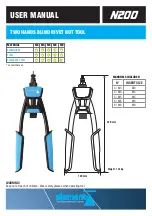
operation, TIT should be at or below 1625ºF. The following table
shows maximum MP for a given RPM:
RPM MAX
MP
2300 29.5
2400 28.0
2500 27.0
DESCENT
1 Cabin
Pressurization
Controller
SET for field elevation
2 Power
AS DESIRED
3
Boost Pump
OFF below 10,000 ft.
4
Mixture
ADJUST as required
5
Speed Brakes
AS DESIRED
CAUTION
Rapid descents at high RPM and idle manifold
pressure setting are to be avoided. During descent,
monitor cylinder and oil temperature and maintain
above the minimum specified limits. Do not permit
CHT to drop below 300F for periods exceeding five
minutes.
BEFORE LANDING
1 Seats,
Belts,
Shoulder Harnesses
ADJUST and LOCK
2 Lights
AS REQUIRED
3 Fuel
Tanks
FULLEST TANK, PUMP OFF
4 Flaps
Takeoff Pos 90 – 95 KIAS
Landing Pos 85 – 90 KIAS
5 Throttle
As desired (14 - 15” MP)
6 Mixture
RICH
7 Prop
MAX
RPM
8
Pressurization
CHECK cabin dumped
9 Yaw
Damper,
Autopilot
DISENGAGED
10 Speed
Brakes
RETRACTED
APPROACH
On the downwind leg, adjust power to maintain 110 KIAS to 120 KIAS
with the flaps retracted, about 14” to 15” MP. When opposite the
landing point, reduce power, set flaps to the takeoff position, and
reduce speed to about 90 KIAS, about 13” – 14” MP. On the base leg,
set the flaps to the landing position, and reduce speed to 85 or 90
Summary of Contents for ES-P
Page 10: ...Basic Airframe Dimensions ...
Page 22: ......
Page 38: ......
Page 60: ......
Page 80: ......
Page 82: ...CARE AND CLEANING 10 EXTERIOR PAINTED SURFACES 11 ENGINE 11 RECOMMENDED SERVICING 12 ...
Page 94: ......
Page 95: ...SECTION 9 SUPPLEMENTS TABLE OF CONTENTS ALTITUDE REGULATIONS 2 ALTITUDE REACTION 2 ...
Page 98: ......
Page 108: ......
Page 120: ...WORK PERFORMED ...
Page 122: ...Idle cut off Static rpm Idle mixture Check engine for oil leaks ...
















































